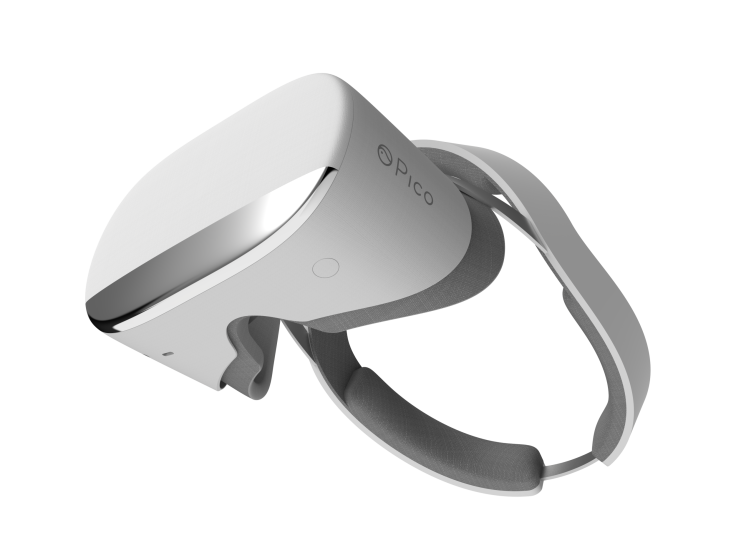Virtual reality was all the rage at this year’s GDC, but all of the major VR headsets possessed one huge problem: users are always tethered to a computer through a number of cables. Even using a portable headset like the Gear VR or Google Cardboard still requires a phone. That’s where the Pico Neo CV comes in.
The Pico Neo CV is a VR headset with no cables and no additional hardware requirements. The device is lightweight, responsive, and offers just about every feature you’d expect from a mid-range VR headset. In fact, there are also some additional features that other headsets don’t have.
By using a front-facing camera, the Pico Neo CV can include some pretty spot-on head and body tracking. Instead of using stationary cameras to watch you, like the Oculus Rift or HTC Vive, the Pico Neo CV watches everything around you to get similar results. In the demo I was given, I had to cross a laser-filled room like Catherine Zeta-Jones in Entrapment. The headset made sure I had to stoop down low and time my movements right, with the tracking performing perfectly.
What’s really astounding is how lightweight the headset is. While the battery life is only around two and a half hours, you’d still expect a headset that is doing all of the processing power on its own would be a bit heftier. The Pico is pretty comparable to the other major headsets in terms of weight and comfort, and might even be a little easier on the neck. If the 2.5 hour battery life is an issue, it’s possible to plug in an external battery pack, just like a cell phone. Of course, this would make the Neo have a wire attached to it at that point.
As for what else you can actually do with the headset, the Pico is an Android-based piece of hardware that can access a store via wi-fi. It’s also been just announced that the Pico will work nicely with apps running on the Unity game engine, so any VR game made with Unity should be able to be ported over with the press of a button. Additionally, the headset has an SD card slot to allow users to load up games or movies easily without filling the internal storage. The Pico headset can accommodate up to 128GB SD cards, so storage space should never really be an issue.
Like other headsets, the Pico Neo CV also comes with a controller. The controller features similar tracking and features that most other VR controllers have. Additionally, the headset can be paired with other Bluetooth-enabled controllers, so you also can play a game with a gamepad if you happen to have one.
It’s important to note that the Pico Neo CV isn’t looking to compete with the major VR players like the Rift or the Vive. The aim is to become the king of the mid-range VR headsets, taking on competition from the Gear VR or Google’s Daydream headset.
The Pico Neo CV is planning on releasing this year, though a specific release window and price point still have to be determined.
So what do you think? Are you interested in a true standalone VR headset? Do you think wireless technology will be coming to all VR headsets eventually? Let us know your thoughts in the comments section below.


















